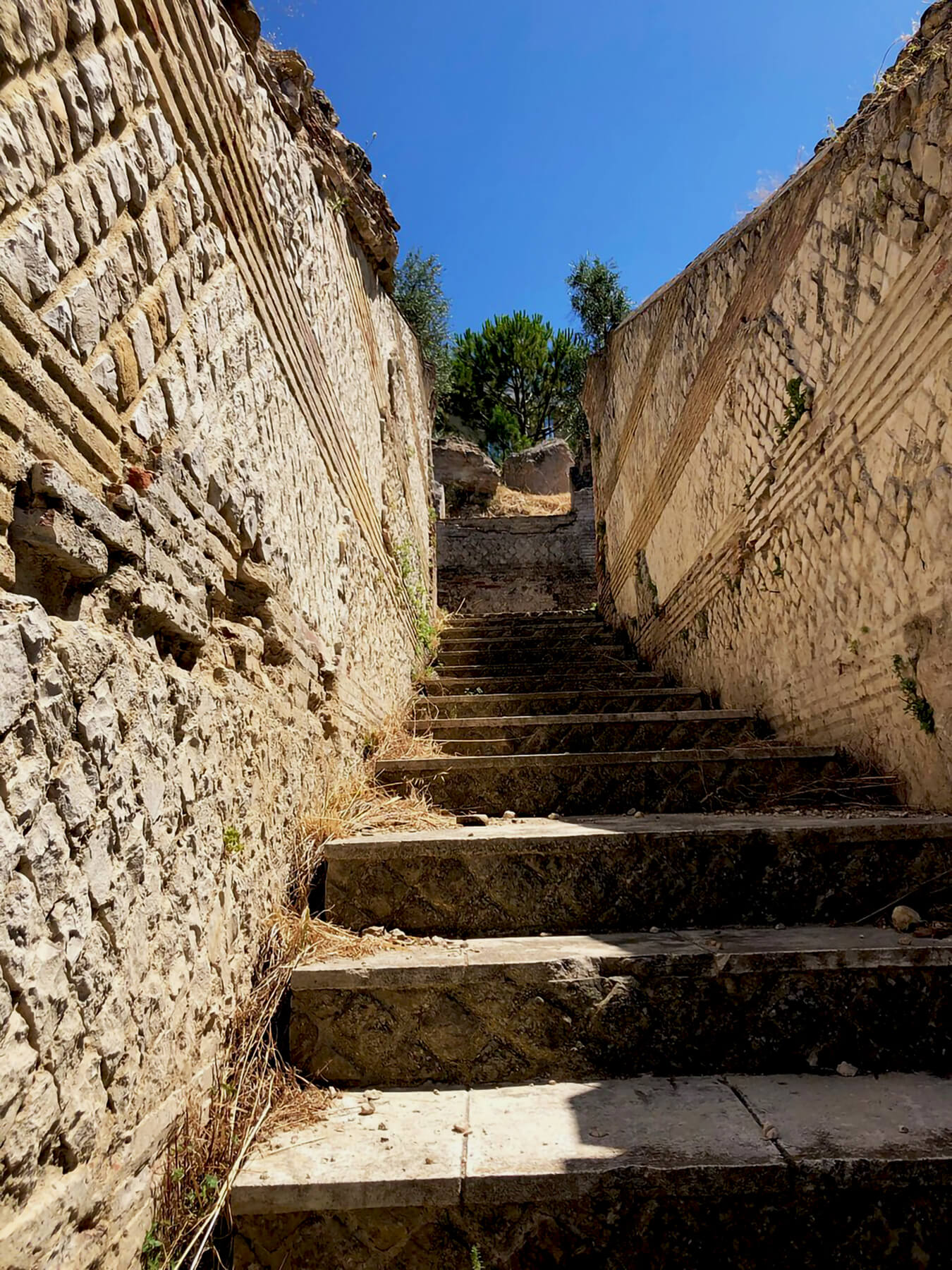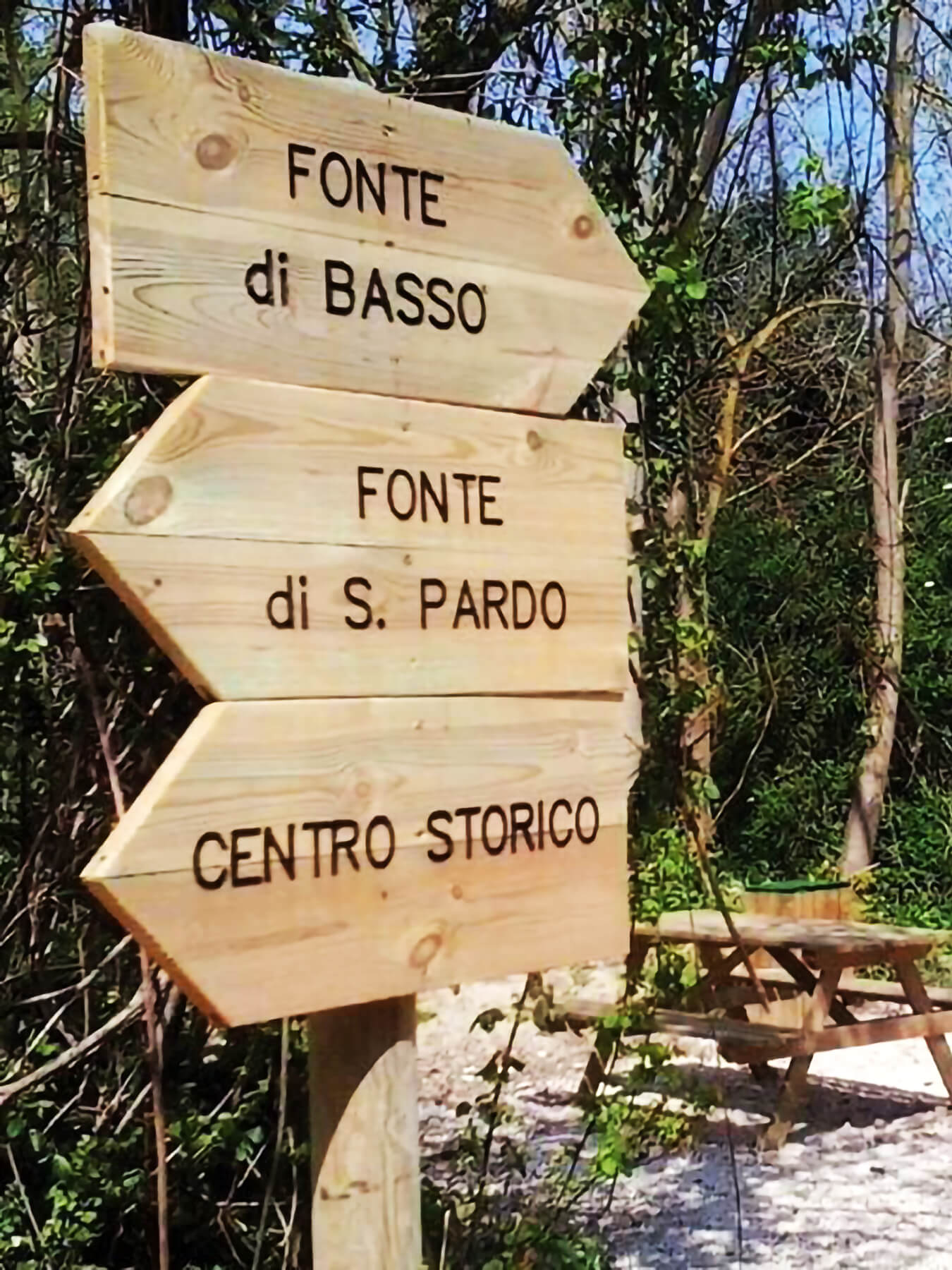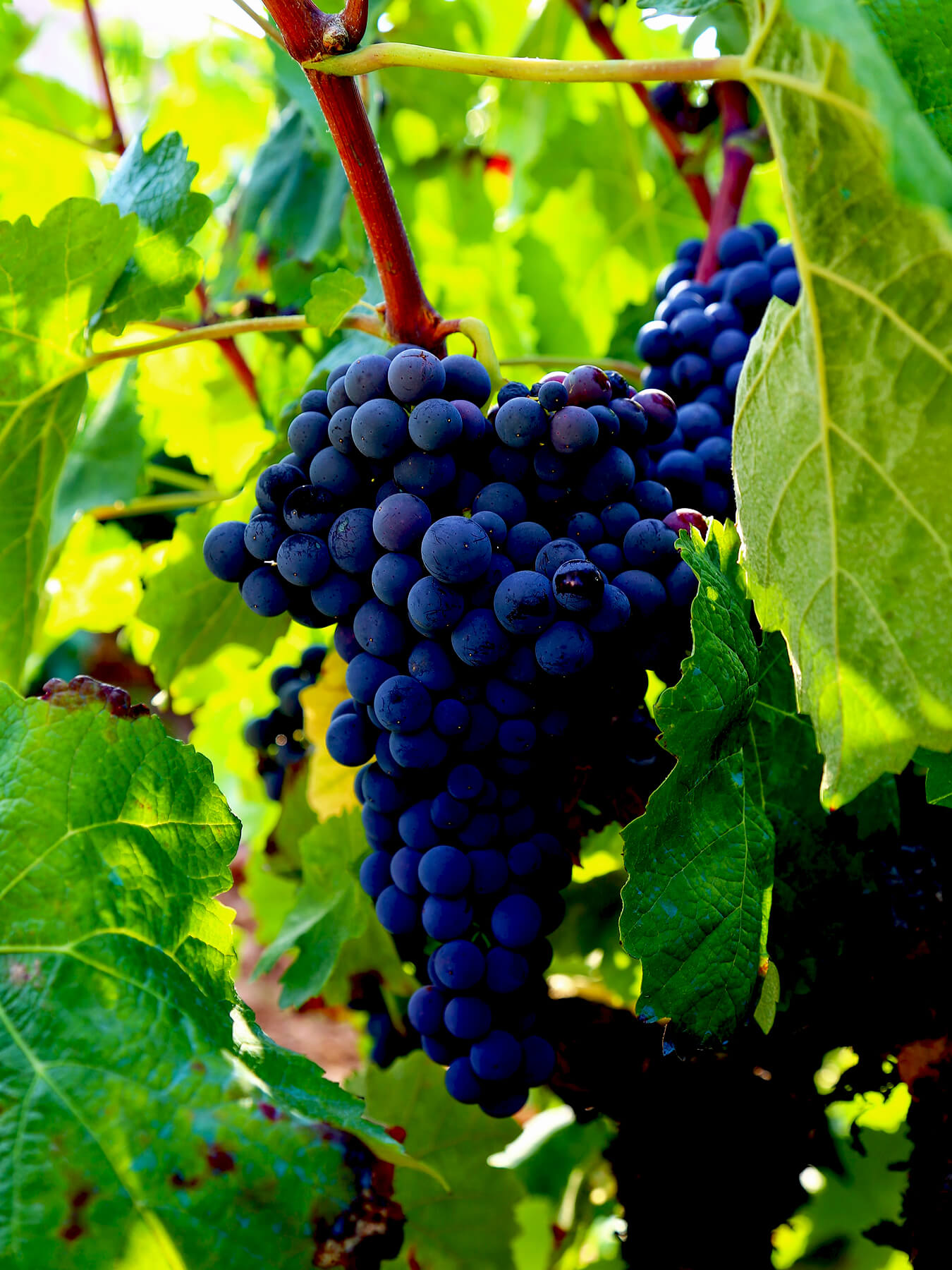Between Nature and Landscapes
la Casa nel Verde
Travelling, dreaming, falling in love, three invitations for the same thing. Three ways to go places we don’t always understand.
Angeles Mastretta
Historical and Archaeological Route
The discovery of tools, spears, swords testify to the presence of life already in the 13th to 6th B.C. In the period between VI and I BC, the presence of the Samnites is established. The first clashes with the Romans began in 343 BC. Roman rule was consolidated in 293 BC and lasted until the fall of Rome.
The most relevant evidence of the Roman period is certainly Larino, which became an important Roman municipium as early as the 1st century BC. As evidence of the flourishing period during Roman times, several finds can be admired: from the Amphitheatre to the Roman Baths, mosaic floors dating from the 3rd century BC to the 3rd century AD, as well as villas, wall inscriptions and epigraphs.

It starts with a visit to the site consisting of the Roman Amphitheatre in Via Dante. The visit then continues to the garden area of Villa Zappone, which features portions of thermal baths and mosaic pavements. This is followed by a visit to the Dolphin mosaic in Via Tito Livio.
Still on the Piano San Leonardo, behind the Civil Court, one goes to a series of Roman structures characterised by two two-coloured mosaics: the Kantharos mosaic and the Emblem mosaic. Near today’s sports ground is an area that used to be, to a good approximation, the Roman Forum, which is now the subject of an archaeological excavation. Two splendid mosaics are preserved here, inside a Hellenistic villa rustica. One, in particular, the so-called Polyp mosaic, is of exquisite workmanship.
The itinerary continues with a visit to the Museo Civico in the Borgo Medievale, which houses, among other things, three splendid mosaics: the mosaic of the She-wolf, the mosaic of the Lion and the mosaic of the Birds. Additional exhibits of daily life, epigraphs, decorative masks and amphorae are also preserved.
The visit concludes with an evocative walk along the streets of the Borgo, to view and comment on the many inscriptions and epigraphs walled along the walls of the buildings facing the main streets, having been taken from the places where they were found.
This itinerary can be undertaken at any time of year, but spring and summer are certainly the best times to enjoy these beauties.
Sources and Fountains Route
In recent years, water has often been the focus of much debate. In the past, fountains were the only structures able to guarantee water supply to citizens. Many fountains do not have an outward appearance of particular artistic interest, but what makes them indispensable is precisely their function. They are often built in the countryside, made of stone and close to springs. Their structure is linked to the functionality of the fountain itself. In Lower Molise, it is easy to come across fountains, iron and/or cast iron fountains, while in the countryside, various drinking troughs for animals are common.
Below are some fountains of notable aesthetic and functional importance.
- In the Borgo Medievale, behind the Ducal Palace in Piazza Duomo, one can see the Fontana Nuova. In the lower part of the same Borgo, there is the ‘Font Ebball’. This fountain recalls one of the two access gates to the ancient Borgo, Porta di Basso.
- Outside the Borgo, heading towards Piano San Leonardo, in Via San Rocco, the Fonte di San Pardo is visible.
- Combined with this route is a visit to the Roman Baths, located within the Archaeological Park Roman Amphitheatre – Villa Zappone.
The ideal time for this visit is the month of May. In particular, on the 24th at the Fonte di San Pardo, the blessing of oxen and cows is celebrated, the protagonists of the patronal feast in honour of San Pardo, which takes place on the following days of 25, 26 and 27 May.
On 26 April 2015, the ‘Three Fountains Path’ in Via S. Rocco was inaugurated. A naturalistic path, immersed in the green lung of the Vallone della Terra, where it is possible to practice sports due to the presence of a small football field, to walk in total tranquillity, and to stop in the areas equipped for this purpose as refreshment points. It is also possible to observe the Ancient Fountain of St. Francis, recently discovered during works.

Religious Route
An interesting itinerary, for its artistic implications, is undoubtedly the one among the various churches of Larino.
This route leads to the knowledge of the most important places of worship in the area.

Churches undoubtedly represent a precious testimony of religious faith, rooted since time immemorial in our lands, but at the same time they are important examples of architecture, guardians of works of art of rare beauty. These are therefore itineraries that unite faith and culture, art and religion in a landscape setting of evocative beauty.
In ancient times, many more churches could be found in the Medieval Village than still exist. However, many of these churches have now disappeared, destroyed or incorporated into public and/or private buildings.
The itinerary starts from the Cathedral Basilica of San Pardo. This is followed by a visit to the church of Santa Maria della Pietà. Following this, we will admire the façades of the churches of San Francesco and Santo Stefano, now closed due to the 2002 earthquake. Leaving the Borgo Medievale, one ascends the Piano San Leonardo to the churches of the Beata Vergine Maria delle Grazie and the church of the Santi Martiri Larinesi. The last stop is the Convent with the adjoining Franciscan Oasis.
This itinerary can take place at any time of year, but spring and summer are certainly the best periods to enjoy these beauties.
Food and Wine Route
Typical Molise gastronomy differs according to the conformation of its territory. While in the more inland areas of the region, characterised by a vast mountainous area, pork dishes, salami, country sausages and soppressate – prepared according to ancient gastronomic traditions – prevail in the small coastal strip, on the other hand, a more typically seafood cuisine prevails, with dishes based on soups, risottos and broths.
This tour aims to enhance not only the history and culture of Larino, but also its flavours and fragrances. Through this tour, an attempt is made to make the most of or promote the ancient flavours of Larino cuisine. The typical local dishes are mostly linked to the folkloristic traditions of Larino.
The strong points of Larinese cuisine are wine and oil
For tourists who love one or the other, we would like to point out that it is possible to combine a tour of the city with a visit to wine cellars or wine shops, where it will be possible to learn about the stages of wine production and the related tasting techniques, as well as a visit to the major oil cooperatives to learn about and witness the different stages of oil production.
With regard to the typical dishes of the Larino area, of particular interest is the traditional spaghetti con la mollica, to be eaten with the hands. This is a typical dish, to be enjoyed on 19 March, the day in honour of St Joseph. The dish is made according to ancient recipes, using 13 different dishes and flavourings. At the end of the meal, zeppole di San Giuseppe are served, consisting of fried or baked puff pastry, garnished with custard and sour cherries.
Typical dishes of Larinese cuisine, which can be sampled at the various local restaurants, combined with the cultural and nature itineraries, include homemade pasta, which can be served with sauce and fresh sausage, the so-called cavatièlle ncatenàte, made using eggs and bacon, from acqua sale, a poor peasant dish, which consists of soaking bread a few days old and seasoning it with tomatoes, oregano, salt and oil, from “Taccozze al pomodoro”, made using homemade sauce, from cd. “Tajiariell” e fagioli, a typical Molise pasta, and finally, from “Pan Cotto” con i broccoli, also a poor peasant dish. Alongside the first courses, there are sausages: “Soppressata”; sweet and spicy sausage. Desserts include “Zeppole di San Giuseppe”, “Rose Catarre”, “Caragnoli” (both sweets garnished with honey) and ‘Calcioni’, with a filling of mashed chickpeas mixed with chocolate.
Scheduled departure from Via Dante, a guided tour inside the Archaeological Park Roman Amphitheatre – Villa Zappone, Roman remains on Piano S. Leonardo and a visit to the Capuchin Convent.
At the end of the visit, we will go to a local establishment for a delicious tasting of typical cuisine.

Carresi's Route
Strong point, an opportunity, capable of giving the idea of a united region, rich in quality and typicality.
Every year in Lower Molise, during the spring months, ancient and spectacular events take place, amidst religion, history and tradition, called Carresi.
These re-enactments unite a number of towns in Lower Molise, characterised by different ethnic groups, origins and traditions, but which in the past all belonged to the Diocese of Larino: San Martino in Pensilis, Ururi, Larino and Portocannone.
The Carresi were born out of the devotion of each local community to its patron saint. In San Martino in Pensilis the discovery of the body of Saint Leo is celebrated (30 April), in Ururi the veneration of a piece of the ‘Wood of the Cross’ (3 May), in Larino the translation of the relics of Saint Pardo is celebrated (25-27 May), and in Portocannone the arrival of the icon of the Madonna of Constantinople (Monday after Pentecost).
The oldest Carresi are those of San Martino in Pensilis and Larino, while those of the other towns are assumed to have originated as an imitation of the oldest ones and introduced after 1879.

In all the above municipalities, except Larino, the Carrese consists of a race of oxen pulling a cart surrounded by horses that compete to carry the relics of the patron saint in procession on their carts. There are three carts competing for victory, and the cart that crosses the finish line first is the winner.
As for Larino, the Carrese takes place according to a precise ritual over three days, from 25 to 27 May. The festival is a tribute to the translation of the body of the patron saint St. Pardo, transported from Daunia on a wooden agricultural cart decorated with flowers and pulled by a pair of cows or oxen. On the first day, the 25th, the colourful procession, consisting of about 120 carts, leaves the Old Town to reach Piano San Leonardo, where it arrives at the municipal cemetery to pick up the statue of St. Primian, as a sign of invitation to the feast. At night, an evocative torchlight procession takes place, accompanying the floats back to the Old Town. On the 26th, the floats parade through the alleys and lanes of the Old Town.
At the end of the parade of floats, there is a procession of the 13 Saints carried on the shoulders of the men of the village. On the last day, the 27th, the floats return to the Piano San Leonardo to reposition the statue of San Primiano at the Cemetery. Before returning to the Old Town, a fun and colourful picnic takes place, and then the procession starts again to end at the Cathedral.
For this itinerary, it would be ideal to be able to take part in at least two of the aforementioned Carresi, in order to understand how important these traditions can be for the local population, a population strongly rooted in its origins, traditions and history.
